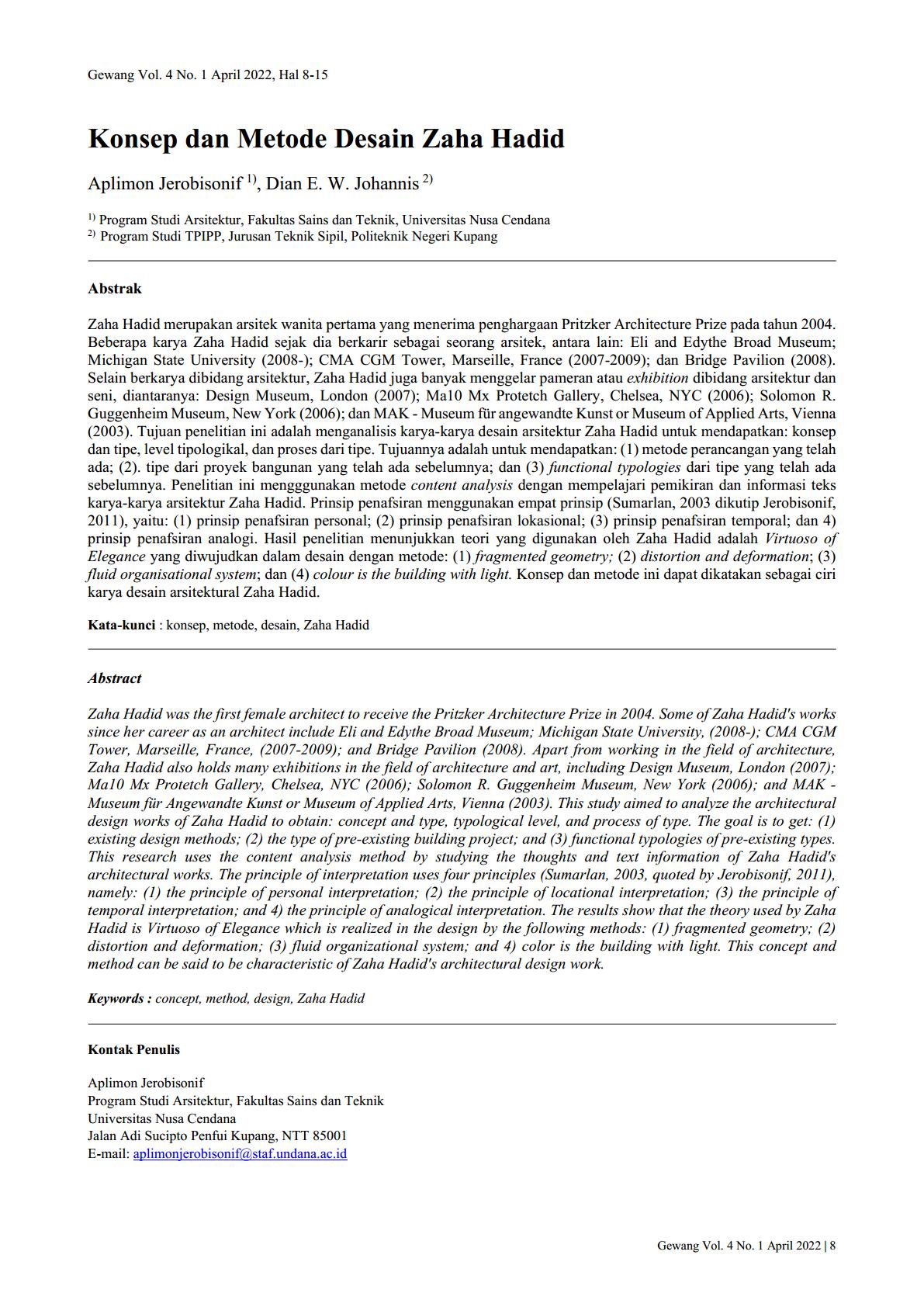Konsep dan Metode Desain Zaha Hadid
Main Article Content
Abstract
Zaha Hadid was the first female architect to receive the Pritzker Architecture Prize in 2004. Some of Zaha Hadid's works since her career as an architect include Eli and Edythe Broad Museum; Michigan State University, (2008-); CMA CGM Tower, Marseille, France, (2007-2009); and Bridge Pavilion (2008). Apart from working in the field of architecture, Zaha Hadid also holds many exhibitions in the field of architecture and art, including Design Museum, London (2007); Ma10 Mx Protetch Gallery, Chelsea, NYC (2006); Solomon R. Guggenheim Museum, New York (2006); and MAK - Museum für Angewandte Kunst or Museum of Applied Arts, Vienna (2003). This study aimed to analyze the architectural design works of Zaha Hadid to obtain: concept and type, typological level, and process of type. The goal is to get: (1) existing design methods; (2) the type of pre-existing building project; and (3) functional typologies of pre-existing types. This research uses the content analysis method by studying the thoughts and text information of Zaha Hadid's architectural works. The principle of interpretation uses four principles (Sumarlan, 2003, quoted by Jerobisonif, 2011), namely: (1) the principle of personal interpretation; (2) the principle of locational interpretation; (3) the principle of temporal interpretation; and 4) the principle of analogical interpretation. The results show that the theory used by Zaha Hadid is Virtuoso of Elegance which is realized in the design by the following methods: (1) fragmented geometry; (2) distortion and deformation; (3) fluid organizational system; and 4) color is the building with light. This concept and method can be said to be characteristic of Zaha Hadid's architectural design work.

